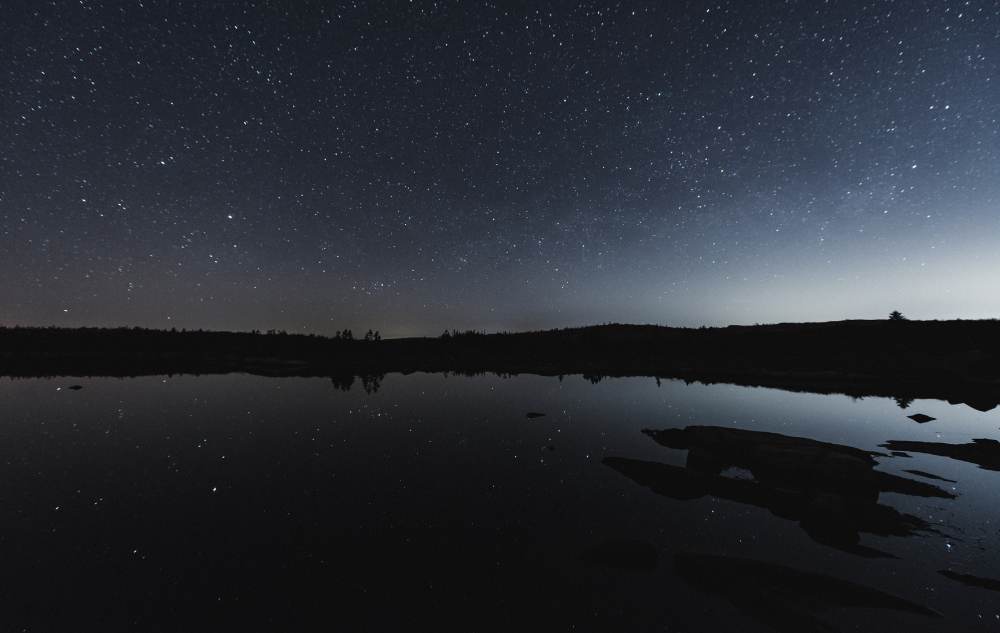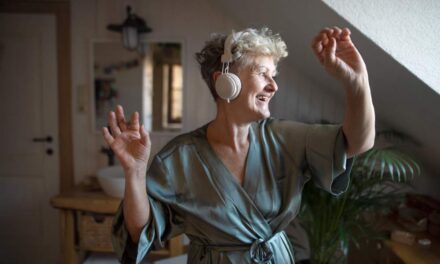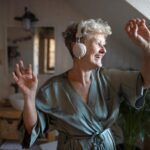Scientific studies show how vital dark skies are to the health of our ecology.
Our bodies and other organisms depend on the cyclical light and dark rhythms that are essential to our well-being. Unfortunately, our dark skies are becoming increasingly lighter. Artificial light pollution and energy waste have adverse effects our health and other organisms’ health.
If you haven’t ever hunted for dark skies, I highly recommend it. Experiencing dark skies as a citizen scientist (whether close to home or in another part of the country) can provide you with an appreciation for the vastness of the universe around us and how interconnected we are.
My family and I recently went on a stargazing canoe trip in the Adirondacks. Deep in the wilderness, we stood on a small sandy beach overlooking a remote pond as the sun began to set. It was a clear and windless evening. The sunset’s rays were breathtaking in blues, oranges, yellows, reds, and pinks. Dimly lit stars slowly brightened the atmosphere as the sky darkened.
It takes the human eye approximately 15-20 minutes to adjust to the darkness of the night.
On the night of our hike, the Adirondack forest was void of a full moon and light pollution. The skies and forest came alive once the darkness fell around us. Stars twinkled in the blackness of the pond before us. Silhouettes of spruce, hemlock, maple, and beech trees and mountain ranges only added to the mystery of the picturesque scene before us.
We could easily see The Big Dipper, bright and massive off, to our northeast. Thanks to the clear evening, we could see Jupiter in the west. Airplanes flew silently along their charted paths. Satellites lazily drifted across the dark skies, occasionally chased by vibrant orange-tailed shooting stars.
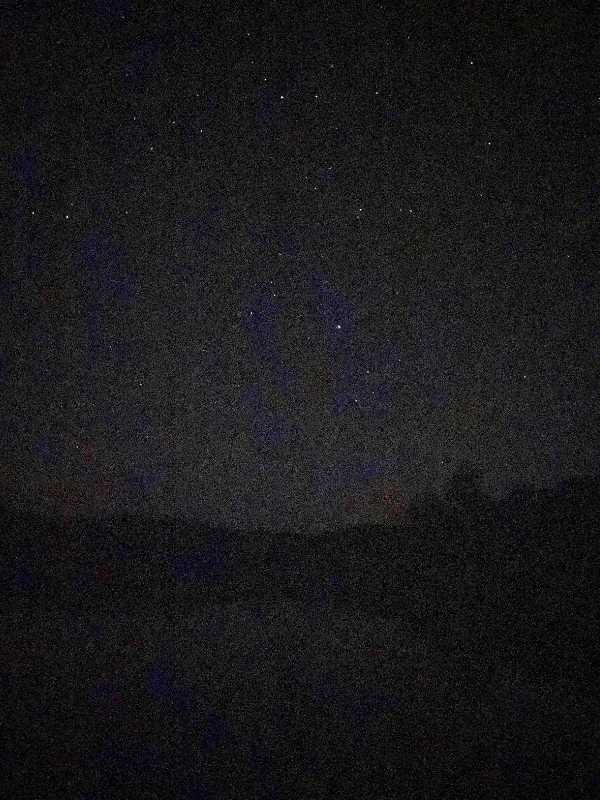
The Milky Way, a little hard to see at first due to the large trees partially blocking our line of sight, became fully visible as the evening progressed. We marveled at the dazzling show in the sky and pondered what lies beyond in galaxies unknown to us. What a gift it is to experience truly dark skies!
Measuring and Protecting Our Dark Skies
Adirondack Park has one of the darkest skies in the Northeastern United States. It’s the perfect spot to enjoy a remarkably dark and pristine night of stargazing. The park is classified as a level 2 on the Bortle Scale. This scale, created by astronomer John E. Bortle, is widely recognized and used to determine the night sky’s brightness. It considers factors such as wildfire smoke, humidity, haze, clouds, and disturbances in the atmosphere.
The Bortle Scale has nine levels, each representing a specific degree of the sky’s brightness. Class 1 on this scale designates the darkest sky found on Earth, and Class 9 represents the most intrusive glow of light-polluted skies typically associated with industrial, commercial, and urban areas.
The Dark Sky Association was founded in 1988.
The organization is responsible for certifying 170 sites around the world to conserve and protect parks, communities, and other places unpolluted by light. According to darksky.org, “There are now over 160,000 square kilometers of protected land and night skies in 22 countries on six continents, and the list grows yearly as new places achieve certification.” World Atlas states, “These areas exist in categories such as communities, reserves, and parks at least 700 km, extensive and accessible, reserves, and sanctuaries that are remote, hard to access, and necessary to protect specific environments.” The importance of dark skies at night is becoming more relevant and publicized, as light pollution encroaches and increases from industry and urbanization.
According to the Department of Conservation and Natural Resources (DCNR), Cherry Springs State Park “was designated as a Gold Level International Dark Sky Park in June 2008, which is the highest designation given to a dark sky site.” Here, visitors can stargaze in one of the best places on the eastern seaboard and learn about the science of astronomy. Cherry Springs State Park is ranked second on the Go Astronomy Dark Sky website.
During our dark sky experience at Cherry Springs, visitors are held to strict restrictions to preserve the park’s darkness.
Visitors may only use red lights (which are dark-sky friendly) instead of white lights. Guests may not enter the park after sunset.
Cherry Springs’ environmental educators were highly knowledgeable, using laser pointers to point out specific constellations. They showed guests how to use their cell phones, ID apps, books like A Field Guide to the Night Sky, and maps to identify what they were seeing in the dark sky. Educators also demonstrated how telescopes can help us identify what is being seen in the nighttime sky. Stargazers were able to see firsthand the craters on the moon, planets and their rings, and other astrological features.
Many years ago, my partner and I stargazed many nights at the most prominent dark sky reserve, Aoraki Mount Cook National Park, Lake Tekapo, Mackenzie Basin in the South Island of New Zealand. The Southland rural region of New Zealand is void of light pollution. We beheld brilliant stars sparkling like diamonds as the constellations and Milky Way captured our attention. Less than 20% of people can see the Milky Way from where they live. But in New Zealand, one can witness the majesty of the Milky Way within a half hour from a dark sky area.
Light Pollution and its Effects
We have learned that artificial light adversely affects nocturnal animals, plants, insects, marine life, and humans. It also interferes with our natural biorhythms and sleep behaviors. Some facts about light pollution and its effects are:
- Highly lit cities attract birds and disorient them. The birds are duped into thinking it is still daylight when it is not. They become victims of increased bird strikes, collisions, death, and changes in migration and breeding patterns.
- Insects impacted by artificial light, such as fireflies, are confused between natural and artificial lighting. Moths and other insects are drawn to outdoor lighting. Artificial lights interfere with their activity, increase likelihood of death by predators, and disrupt reproductive cycles.
- Sea turtle nocturnal patterns can be disrupted by urban lighting. They follow the brightest light to safely return to the ocean after laying eggs. Their preferred brightest light is a full moon over the sea, not city lighting.
- Cactus/palms will not flower due to artificial light at night.
- Artificial lighting adds to carbon emissions, wastes energy, and contributes to greenhouse gases.
- As humans, our nocturnal sleep patterns can lead to sleep deprivation. A lack of sleep contributes to headaches and other health issues.
Here is how you can control artificial lighting in your area:
- Use energy-efficient LED light bulbs with warmer or yellow tones.
- Create a smarter directional lighting design by redirecting light to the ground instead of towards the sky.
- Turn off lights that are not being used.
- Use low-glare outdoor lighting.
- Place dimmers, motion sensors, and nighttime timers on essential outdoor lamps.
- Use inexpensive solar-powered lights for outdoor lighting.
Want to know where can you participate and enjoy the dark skies?
Check out your local, county, state, and national parks for events and outings on how to enjoy an evening in the dark nighttime sky.
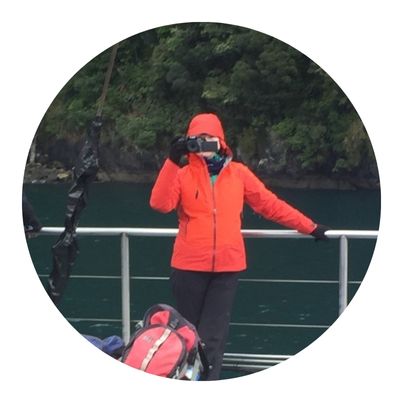
Written by Yvonne Dwyer
Master Naturalist and OPL Content Contributor
“It is truly an honor for me to be a contributor to One Planet Life. By sharing my experiences and lifetime of learning, I hope to inspire conservation, sustainability, stewardship, and awareness of enjoying the natural wonders of the world for the wellbeing of people and the planet.”

